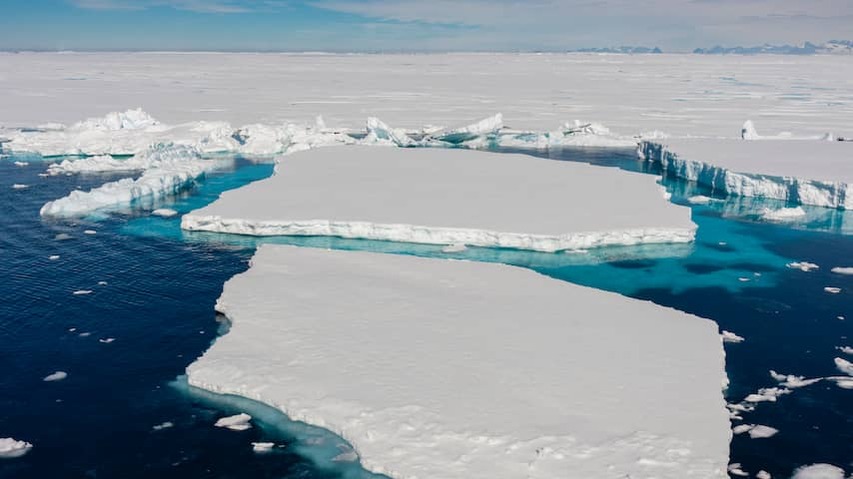
Even if we succeed in limiting global warming to 1.5 degrees, the world may face meters of sea level rise. Scientists fear that the temperature target from the Paris Agreement cannot prevent the melting of ice caps.
The temperature limit to completely stop the melting of the ice caps in Antarctica and Greenland is likely closer to 1 degree Celsius of warming since industrialization. That is what British and American scientists write in the journal Communications Earth & Environment.
In their article, the researchers combine climate models and data on historical sea levels. According to the researchers, recent measurement data also show that the ice caps are not safe even with the current warming of around 1.2 degrees Celsius.
Currently, the global sea level is rising by around 4 millimeters per year. The KNMI (Royal Netherlands Meteorological Institute) expects a sea level rise of between 26 and 124 centimeters this century. There is still a considerable amount of uncertainty in this, which is mainly related to how many greenhouse gases the world continues to emit. If we adhere to the Paris Agreement, the KNMI expects a sea level rise of around 44 centimeters in 2100.
But at the end of this century, that rise will not stop, as the new research once again shows. Even if the temperature then stabilizes at 1.5 degrees above the average from before industrialization, the sea level can continue to rise by meters in the centuries that follow.
1 centimeter per year
It would still be a “huge achievement” to limit warming to 1.5 degrees, says lead author Chris Stokes of Durham University. “But even if we achieve that goal, people need to know that sea level rise will increase at rates that make it difficult to adapt. It is not inconceivable that young people will still experience it rising by 1 centimeter per year.”
More than 200 million people live in coastal towns that are less than 1 meter above sea level. If the sea level rises too quickly, it will be difficult to protect such places, according to the scientists.
“You cannot rule out that the current warming is already too much for some parts of the ice caps,” says Roderik van de Wal, professor of Sea Level Rise at Utrecht University and researcher at the KNMI. He was not involved in the new research, but tells NU.nl that it raises a legitimate question.
However, he finds it “rather undifferentiated” to state that an annual sea level rise of 1 centimeter would be a problem everywhere. “People at Rijkswaterstaat (the Dutch Directorate-General for Public Works and Water Management) will not immediately lose sleep over that. We are extremely well prepared and also have a lot of money. But in other places, that centimeter is indeed a major problem.”
Sea Level Rise Continues for Centuries
Moreover, sea level rise is a process that, once it has started, continues for a long time. Van de Wal sees that this is not always taken into account. For example, the Ministry of Infrastructure and Water Management presented a study last year stating that the Netherlands can technically handle a sea level rise of 2 meters in 2100 and 5 meters in 2200.
“But you know that a hundred years later, extra meters will have been added,” says Van de Wal. “Then it is no longer feasible.” Lowering the global temperature after a so-called ‘overshoot‘ above 1.5 degrees no longer offers a solution. A tipping point may already have been passed, after which the ice caps will continue to melt.
According to him, it makes it clear once again why we must try to stop global warming as quickly as possible. Stokes also says this: “It is not necessarily the case that everything is lost at 1.5 degrees, but for the ice caps, every fraction of a degree matters.”